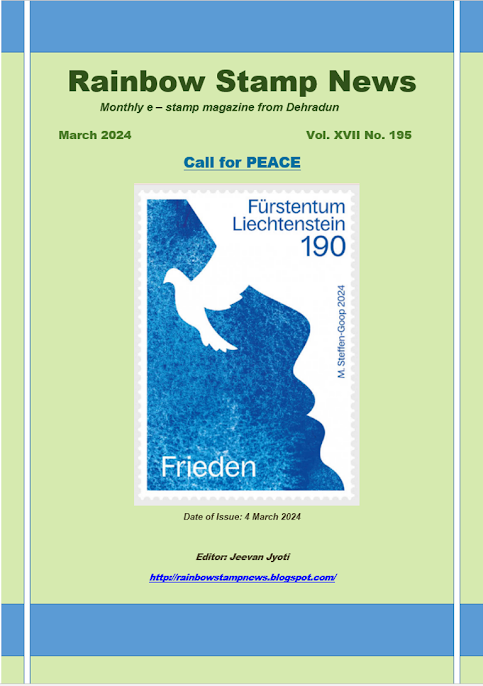Date of Issue : 8 January 2014
Here is new stamp from France for thi year’s Valentine’s Day.Every year, for Valentine day, La Poste (the French postal service) issues postage stamps designed by the greatest name in the French fashion industry such as Hermes, Chanel and Cacharel. These Valentine day stamps are heart shaped and comes in various denomination and presentation. They are gorgeous tiny pieces of art, and can make a cheap affordable collection.
This year glass maker Baccarat has the honor of being featured on the Valentine themed heart stamps. These come in souvenir sheet and 2 values both on gummed and adhesive back. A small luxury at low postal rates (starting at 0,61€) that conveys couture potential to paper and land mail should awaken the collector souls.
The stamp is characterized by bling and divinely elegant side given by the serigraph print with golden ink that symbolizes the sparkle of crystal, but also the central illustration setting forth leading creations by the House of Baccarat.
Since 2000 (with the exception of 2002), this honor have always been awarded to the French fashion designers Yves Saint-Laurent (2000), Christian Lacroix (2001), Torrente (2003), Chanel (2004), Cacharel (2005), Jean-Louis Scherrer (2006), Givenchy (2007), Franck Sorbier (2008), Ungaro (2009), Lanvin (2010), Maurizio Galante (2011), Hermes (2013).
New Stamps on World Heritage Sites in Germany
-- Pradeep Kuma Mallik
On 2nd January 2014, three stamps were issued by German Postal authorities, Deutsche Post, related to World Heritage sites of Germany.
Scholass Stolzenfels am Rhein (Stolzenfels Castle on the river Rhine): The castle was constructed in 1259. It was used to protect the toll station at the Rhine, when the ships were the main transport for goods, had to stop and pay toll. Over the years it was extended several times. The castle was occupied by French and Swedish troops in the Thirty Years' War and finally, in 1689, destroyed by the French during the Nine Years' War. For 150 years the ruins decayed, until in 1815 they were given as a present to Frederick William IV of Prussia by the city of Koblenz.
Following the romantic traditions, the prince started to completely rebuild the castle after 1826 as a summer residence. Supported by famous neoclassic architect Karl Friedrich Schinkel, the castle was completely remodeled in the then fashionable neo-Gothic style, aiming to create a romantic place representing the idea of medieval knighthood - the architects even created a tournament site.
On the steep slope to the river Rhine, a neo-Gothic castle chapel was built. The design of the gardens - at the northern tip was the charming pergola garden with views of the valley - was also associated with the natural surroundings. The road from the valley to the castle was designed like a park with a stone bridge, a waterfall and a hermitage.
This castle palace found its place in the World Heritage List in 2002, is a part of World Heritage – Upper Middle Rhine Valley.
1250 years of Lorsch Abbey: The Abbey of Lorsch is a former Imperial Abbey of the Carolingian Empire. Even in its ruined state, its remains are among the most important pre-Romanesque–Carolingian style buildings in Germany. In 1991 the ruined abbey was listed as a UNESCO World Heritage Site.
The stamp shows a painting created in 1854 by the Darmstadt court painter August Lucas (1803-1863) with the Torhalle (Gatehouse) in the foreground, the romantic excessive fragment of the monastery church in the background and a look at the Hessian mountain road. The 9th century Torhalle is a unique survival of Carolingian era. This combines elements of the Roman triumphal arch with the vernacular Teutonic heritage – baseless triangles of the blind arcade, polychromatic masonry.
Ancient Beech Forests of Germany: In 2011, UNESCO granted extension to the World Heritage namely - "Beech forests of the Carpathians" by including five forests in Germany. The new World Heritage Site called "Beech Forests of the Carpathians and the Ancient Beech Forests of Germany" and consists of lowland and upland beech forests in Germany and mountain beech forests in Ukraine and the Slovak Republic.
The beech spread in Europe since the last Ice Age, the enormous competitive ability of beech and the variety of types of beech forests are a globally unique phenomenon.
In the German part are selected forest areas of the national parks Hainich in Thuringia, cellar-Edersee in Hesse, Jasmund and Müritz in Mecklenburg-Western Pomerania as well as the forest area Grumsin in the Biosphere Reserve Schorfheide-Chorin Brandenburg. They represent the most valuable remains of large areas of natural beech stands in Germany. Each field in this case has peculiarities and characteristics that make it unique and irreplaceable.
- Pradeep Kuma Mallik : email : mallikphila@gmail.com






















.png)













No comments:
Post a Comment